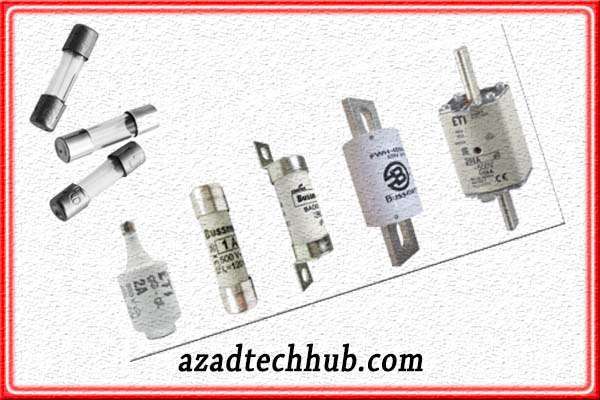Application of HRC Fuse: Important Concepts
The application of HRC fuses (High Rupturing Capacity fuses) spans across a wide spectrum of industries and sectors where electrical safety, reliability, and control are of paramount importance. An HRC fuse, known for its high performance and safety attributes, finds its utility in numerous scenarios, making it an indispensable component in modern electrical systems.

This article delves into the diverse applications of HRC fuses, highlighting their significance in safeguarding electrical circuits and equipment.
Read More About
Application of HRC Fuse
Looking for reliable electrical safety solutions? Explore the versatile application of HRC fuses in safeguarding industrial machinery, power distribution networks, and more. Learn how high rupturing capacity fuses enhance electrical control and prevent hazards. Get expert insights here!
The application of HRC fuses begins with their primary function – to protect electrical circuits and equipment from overcurrents and short circuits. These fuses offer a superior level of protection due to their high rupturing capacity, which allows them to interrupt fault currents quickly and effectively.
This ability to handle high fault currents ensures the prevention of catastrophic equipment failures and potential hazards, making them crucial in various industrial and residential settings.

Key Applications of HRC Fuse
Industrial Machinery and Manufacturing
In industrial settings, where heavy machinery and equipment are in operation, HRC fuses are employed to safeguard against overloads and short circuits. Their high rupturing capacity ensures that faults are promptly cleared, minimizing downtime and preventing costly damage to machinery.
Power Distribution Networks
Within power distribution networks, HRC fuses play a pivotal role in maintaining the integrity of the electrical system. These fuses are strategically placed at critical points to prevent the spread of faults and mitigate the risk of widespread outages.
Renewable Energy Systems
In renewable energy applications like solar and wind power systems, HRC fuses are utilized to protect inverters, converters, and other sensitive components from electrical faults. Their ability to interrupt high fault currents helps maintain the stability of these systems.
Industrial Sector
The industrial sector stands as a prime beneficiary of the application of HRC fuses. Industrial processes often involve heavy machinery, motors, and complex electrical systems that are susceptible to sudden overloads or short circuits.
HRC fuses are employed in various capacities here, from protecting motors in conveyor belts to safeguarding control panels in manufacturing lines. In scenarios where sudden power fluctuations can lead to catastrophic equipment failures or production downtimes, HRC fuses step in to interrupt fault currents promptly.
For instance, in a steel manufacturing plant, large electric arc furnaces draw massive currents. The application of HRC fuses in these settings is crucial to prevent costly damage and ensure smooth operations.
Power Distribution Networks
The backbone of any electrical infrastructure is its power distribution network. HRC fuses play a pivotal role in maintaining the reliability and stability of these networks. They are strategically installed in substations, distribution panels, and transformer stations to protect against fault currents that could propagate through the grid.
The high rupturing capacity of these fuses ensures that faults are isolated swiftly, preventing them from affecting larger portions of the network. In this context, HRC fuses act as the first line of defense against potential widespread outages, ensuring continuous power supply to homes, businesses, and critical facilities.
Renewable Energy Systems
The proliferation of renewable energy sources like solar and wind has reshaped the energy landscape. In these systems, HRC fuses are a cornerstone for protecting sensitive components such as inverters, converters, and battery banks.
Solar photovoltaic installations, for example, generate direct current (DC) that needs to be converted into alternating current (AC) for distribution. The application of HRC fuses at critical points within these systems helps prevent damage from unexpected surges or faults.
This safeguarding mechanism contributes to the overall reliability of renewable energy generation.
Commercial and Residential
In the realm of commercial buildings and residential spaces, HRC fuses find a place in electrical panels, distribution boards, and circuitry. Their application ensures that circuits do not get overloaded due to increased demand, faulty appliances, or other anomalies.
By rapidly interrupting excessive currents, HRC fuses mitigate the risk of electrical fires and equipment damage. This makes them a vital component in ensuring the safety of occupants and the preservation of property.
Automotive Industry
Even within the automotive sector, the application of HRC fuses is evident. Modern vehicles are equipped with intricate electrical systems that power everything from engines and lights to infotainment systems. HRC fuses are integrated into these systems to prevent overcurrents or short circuits that could potentially lead to malfunctions or safety hazards.
HRC Fuse Ratings for Specific Applications:
Industrial Application
For a heavy-duty industrial motor with a current rating of 1000A, an HRC fuse with a rating of 1250A and a voltage rating of 690V AC might be selected. This ensures adequate protection against overcurrents that can occur due to motor startup or other operational conditions.
Renewable Energy System
In a solar inverter setup with a maximum output current of 50A and a voltage rating of 1000V DC, an HRC fuse with a rating of 63A and a voltage rating compatible with the system’s voltage would be chosen to protect the inverter and associated components.
In conclusion, the diverse applications of HRC fuses underscore their significance across a spectrum of industries. From industrial machinery to power distribution networks, renewable energy systems, and everyday electrical installations, HRC fuses contribute to the enhancement of safety, control, and reliability.
Their ability to handle high fault currents and interrupt them swiftly makes them an indispensable component in modern electrical engineering, ensuring the smooth functioning of equipment, systems, and infrastructure.
Follow us on LinkedIn”Electrical Insights” to get the latest updates in Electrical Engineering. You can also Follow us LinkedIn and Facebook to see our latest posts on Electrical Engineering Topics.
